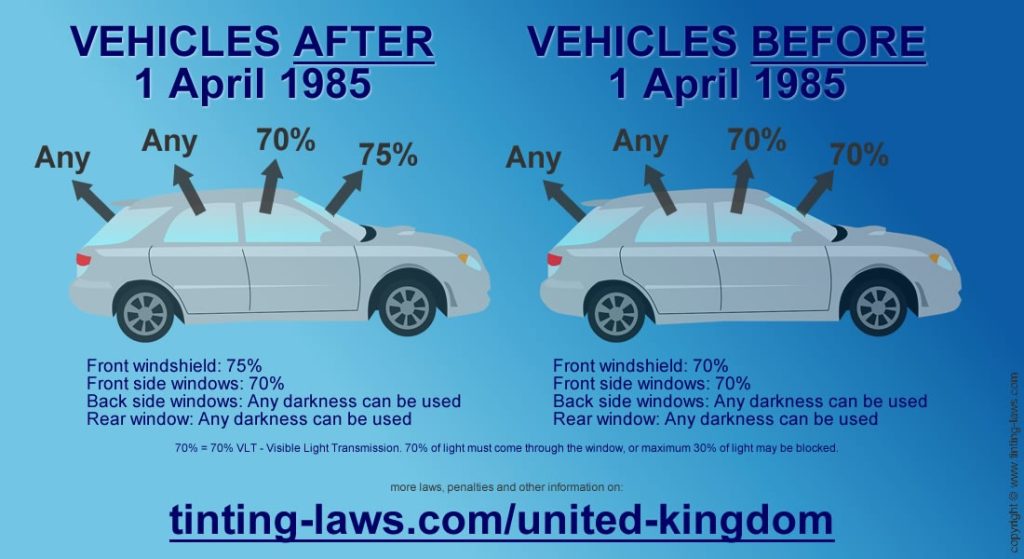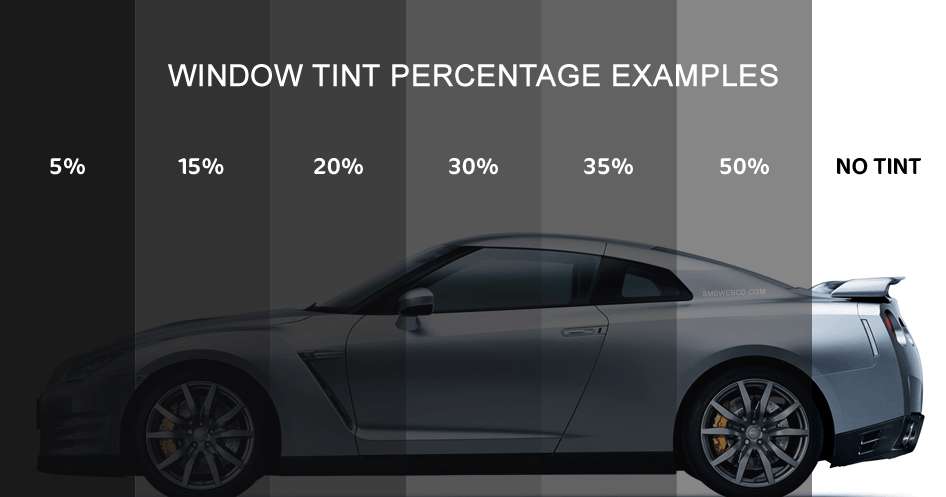As an Amazon Associate, I earn from qualifying purchases
Car tint laws vary from state to state. They regulate how dark you can tint your car windows.
Understanding these laws is important for every car owner. Car window tinting is popular for many reasons. It enhances privacy, reduces glare, and keeps interiors cool. But, not all tints are legal everywhere. Each state has specific rules about the darkness and reflectiveness of window tints.
Ignoring these rules can lead to fines or even failing car inspections. Knowing your local car tint laws can save you from trouble. This blog will guide you through the basics of car tint laws, helping you stay compliant and enjoy the benefits of tinted windows.

Credit: www.cartintlaw.com
Introduction To Car Tint Laws
Car tint laws help drivers stay safe on the road. These laws vary by state and country. Understanding them can prevent legal issues and keep you out of trouble. Knowing the basics is essential for all car owners.
Why Car Tint Laws Exist
Car tint laws ensure that drivers have clear visibility. They also help police officers see inside vehicles during traffic stops. This ensures safety for both the driver and the officer. Tint laws also protect other road users by preventing overly dark windows.
Importance Of Knowing Local Laws
Each state has its car tint regulations. What is legal in one state may not be in another. Knowing your local laws can save you from fines and penalties. It also helps you make informed decisions when tinting your car windows.

Credit: www.tinting-laws.com
Understanding Tint Percentages
Car tint laws can be confusing. Understanding tint percentages helps you follow the law. Tint percentage is the amount of light that passes through your car windows. It affects visibility and safety. Knowing the right percentage for your state is crucial.
What Is Visible Light Transmission (VLT)?
Visible Light Transmission, or VLT, measures the amount of light that passes through a window. It is expressed in percentages. A higher VLT means more light passes through. A lower VLT means less light passes through. For example, a 70% VLT allows 70% of light through the window.
Different VLT Levels Explained
Different VLT levels provide varying degrees of tint. A 50% VLT allows 50% of light to pass through. This level provides a moderate tint and good visibility. A 35% VLT allows 35% of light through, offering more privacy and sun protection. A 20% VLT is darker, allowing only 20% of light. This level gives a much darker look and more privacy.
Some states have strict regulations. Always check your local laws before tinting your car windows. Knowing the allowed VLT percentage helps you avoid fines and stay safe.
State-specific Regulations
Car tint laws differ across states. Understanding these regulations is crucial. Each state has unique rules for window tinting. These rules ensure safety and visibility for drivers. Violating these laws can lead to fines or penalties. Knowing your state’s specific tint laws helps avoid legal issues.
How Tint Laws Vary By State
Tint laws vary greatly between states. Some states allow darker tints. Others have strict limits on tint darkness. Each state sets its own Visible Light Transmission (VLT) percentage. This percentage determines how much light must pass through the tint. For example, California has a minimum VLT of 70% for front windows. Texas allows a VLT of 25% for front-side windows. Medical exemptions also differ from state to state.
Finding Your State’s Regulations
Finding your state’s tint laws is easy. Visit your state’s Department of Motor Vehicles (DMV) website. They provide detailed information on tint regulations. You can also contact local law enforcement for guidance. Many online resources offer state-specific tint law details. Ensure the information is current and accurate. Being informed helps you stay compliant with tint laws.
Legal Vs. Illegal Tints
Understanding the difference between legal and illegal car tints is crucial for drivers. Car tint laws vary by state and country. Knowing these laws can help you avoid fines and keep your vehicle safe.
Commonly Restricted Tints
Many regions have specific rules on the types of tints allowed. Below is a table showing common restrictions:
| Type of Tint | Description | Common Restriction |
|---|---|---|
| Front Side Windows | Windows next to the driver and passenger seats | Must allow more than 30% light |
| Rear Side Windows | Windows behind the driver and passenger seats | Varies, often less restrictive |
| Windshield | Main front glass facing the driver | Usually, only a top strip is allowed |
Consequences Of Illegal Tint
Using illegal tints can lead to several consequences. These can affect your safety and wallet:
- Fines: Most common consequence. Fines can be hefty.
- Vehicle inspection failure: Your car may not pass annual checks.
- Insurance issues: Some companies may deny claims.
- Safety risks: Reduced visibility can cause accidents.
Illegal tints can be more trouble than they are worth. Make sure to follow local laws to avoid these issues.
Medical Exemptions
Car tint laws can be strict. But some people need medical exemptions. These exemptions help those with medical conditions. They allow darker tints for comfort and safety. Let’s explore what qualifies and how to apply.
Qualifying Conditions
Certain medical conditions qualify for exemptions. These include skin conditions like lupus. Lupus patients suffer from sun sensitivity. This makes darker tints necessary. Other conditions include albinism and melanoma. Both conditions require protection from the sun.
Eye conditions also qualify. Glaucoma and macular degeneration are examples. These conditions make bright light harmful. A darker tint can reduce glare and improve comfort. Check with your doctor for more qualifying conditions.
Applying For An Exemption
Start by consulting your doctor. They will provide a medical certificate. This certificate states your condition and need for tint. Submit the certificate to your local DMV. Include any required forms or fees. Each state has different requirements.
Wait for approval from the DMV. Once approved, follow the guidelines given. Keep the exemption certificate in your car. This will help if you get stopped by law enforcement. Remember to renew your exemption as required.

Credit: magnumtruckracks.com
Getting Your Car Windows Tinted
Getting your car windows tinted can enhance privacy and reduce glare. It can also protect your car’s interior from sun damage. But it’s important to know what steps to take. Let’s dive into the process of getting your car windows tinted.
Choosing A Reputable Service
Start by finding a reputable service provider. Look for companies with positive reviews and a solid reputation. Ask for recommendations from friends and family. Check online reviews for customer experiences. Make sure they use high-quality materials. Quality tinting film lasts longer and performs better.
Visit the shop before making a decision. Observe their work environment. A clean, organized space indicates professionalism. Ask about their experience and how long they’ve been in business. Experienced installers usually provide better results. Request to see samples of their previous work. This can give you an idea of their skill level.
Ensuring Compliance With Laws
Each state has specific car tint laws. These laws regulate how dark or reflective your window tint can be. Check your state’s regulations before getting your windows tinted. You can find this information on your state’s DMV website. It’s crucial to follow these laws to avoid fines.
Discuss compliance with the tinting service provider. They should be familiar with local laws. Ensure they use legal tinting materials. Ask for a written guarantee that the tinting will meet legal standards. This can protect you in case of any issues later.
Remember, compliance ensures your safety. It also helps you avoid unnecessary legal troubles. Stay informed and choose a service that prioritizes following the law.
Maintaining Tinted Windows
Maintaining tinted windows in your car helps them last longer. Clean windows give a clear view and keep your car looking sharp. Follow these simple steps to keep your tinted windows in top shape.
Proper Cleaning Techniques
Cleaning tinted windows requires special care. Avoid using products with ammonia, as they can damage the tint. Use a mild soap and water solution instead.
- Mix a few drops of mild soap with water in a spray bottle.
- Spray the solution onto the window.
- Use a soft cloth or sponge to gently wipe the surface.
- Dry the window with a microfiber cloth to avoid streaks.
Do not use sharp objects to remove dirt. They can scratch the tint. Always clean the windows in the shade to prevent water spots.
When To Replace Tint
Window tint does not last forever. Look for signs that it needs replacing. Common signs include bubbles, peeling, or fading. If the tint turns purple, it is time for a new one.
Here is a simple table to help you know when to replace the tint:
| Sign | Action |
|---|---|
| Bubbles | Replace |
| Peeling | Replace |
| Fading | Replace |
| Purple Tint | Replace |
Replacing the tint will improve the look of your car. It also helps in blocking harmful UV rays better.
Frequently Asked Questions
What Are Car Tint Laws?
Car tint laws vary by state and country. They regulate how dark windows can be tinted and which windows can be tinted.
Why Are Car Tint Laws Important?
Car tint laws ensure drivers have clear visibility. They also help law enforcement officers see inside vehicles for safety reasons.
How To Check My State’s Car Tint Laws?
You can check your state’s car tint laws on the official DMV website. They provide detailed information about permissible tint levels.
Can I Get Fined For Illegal Car Tint?
Yes, you can get fined for illegal car tinting. Fines vary by state and can include additional penalties.
Conclusion
Understanding car tint laws helps you avoid fines. Always check local regulations. Stay safe and legal on the road. Remember, proper tinting improves comfort and privacy. Consult a professional for advice on compliant tint options. Respecting laws keeps you and others safe.
Make informed decisions for a hassle-free driving experience. Always prioritize safety and legality.
As an Amazon Associate, I earn from qualifying purchases


